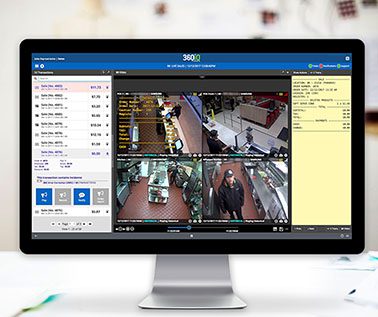We know that covid has resulted in further increases in fraud overall in the UK and beyond, because more transactions are occurring via credit card and online, says Duncan Fielding, Director of Enterprise Sales, UK and Ireland, DTiQ.
The Office of National Statistics states: “Fraud and computer misuse offences have increased substantially over the last two years; while many other types of crime have decreased, affected by periods of national lockdown during the coronavirus (COVID-19) pandemic.” The ONS goes on to confirm that fraud offences increased by 25% (to 4.5 million offences) compared with the year ending March 2020, driven by large increases in “advance fee fraud” and “consumer and retail fraud”.
A busy retail store or restaurant is a positive thing: it’s a sign that business is booming. But the hustle and bustle of deliveries, customers coming in and out, and employees changing shifts can create opportunities for mistakes and even intentional theft.
Artificial Intelligence (AI) enabled software combined with video surveillance has developed in recent years and now offers the chance to mitigate loss prevention, and there are many examples. For instance, in the quick service restaurant (QSR) space, third party fraudulent charge backs have become a particular challenge. Here a customer makes an online purchase, typically using a credit card and the payment is reversed by the customer’s bank, meaning the merchant loses the money.
We have come across small chains losing up to £300 to 400 per month, where dishonest customers are ordering and claiming their order was wrong, or items were missing. With no proof or evidence, operators are unable to stand up for themselves and automatically have to pay the customer back.
Video surveillance should be able to help, but generally, because managers are busy, only one per cent of footage is ever viewed. However, our advanced server technology records video surveillance of stores and software maps this to EPOS data. Integrated AI automatically picks out and alerts operators to any anomalies which need highlighting so there is no need to view hours of video footage. It also provides the option to search for precise time slots or incidents, and footage can be stored for the duration of the contract so operators can check past events easily if needed. We are now finding that 50% of QSR third party fraudulent disputes can be resolved successfully by using video surveillance proof in combination with AI and analytics, saving the operator both time and money.
The use of AI is also growing to identify suspicious transactions to help mitigate loss prevention generally. This is because, AI or machine learning identifies patterns of behaviour from both customers and staff and can be ‘trained to flags issues which need addressing automatically. For example, we are seeing particular problems with kiosk ordering, where customers order at one counter, get a receipt and pick up food or goods from another counter. Staff rarely cross check receipt numbers with food ordered and, so an announcement that one order is ready can result in another random person collecting the food – either deliberately or in error.
A wrong meal will require a refund and/or food needs to be prepared again. AI and video surveillance can alert managers and ensure issues are resolved quickly.
Loss prevention software incorporating AI can also help reduce internal theft through a process known as exception-based reporting. Analysis reviews a string of transactions and flags outliers so managers and owners can catch employee errors: they may be inputting orders incorrectly or giving unapproved discounts. Conversely, a worker may be intentionally committing theft, such as voiding a transaction and pocketing the money. This reporting tool can flag unusual activity, so managers don’t need to waste time manually reviewing transactions.
Vendor fraud can also be an issue and can happen when a third-party supplier steals from a business. Fraud may be unintentional: for example, a vendor might accidentally deliver fewer items than they were contracted to provide. Whether it’s deliberate or an honest mistake, vendor theft can impact profit, interrupt operations, and negatively affect customer relationships. AI in combination with surveillance footage can be used to flag and identify patterns of behaviour which fall outside the normal parameters quickly, enabling operators to address and rectify the situation.
Technology is best used in combination with analytics and human auditors to create the greatest value for QSR and retail clients. It might be used to identify precisely when shops open and close, address less used isles with heat mapping and track customers to learn how they move through stores and if they made purchases or not for example.
A real-life security example is with self-serve drinks machines. While this innovation can reduce labour costs, it also allows bad actors to shoplift products or commit fraud where customers bring their own flask to fill it with a drink which was never paid for. Smart camera systems and AI enabled software can identify and reduce theft in unstaffed areas like self-checkout kiosks. At one trial site in central London recently, our software plus observation recorded six non-paying customers in one hour come into the store and help themselves! If not highlighted and addressed this would have result in significant losses over time. Security and loss prevention in the QSR and retail space has changed in recent times. Cash loss used to be a huge challenge, but in the UK, this has reduced to almost zero since COVID. Security and losses are now centred around operational issues which may be from deliberate fraud, theft, mistakes or relate to reduced speed or quality of service issues.
To future-proof their operations, retailers now need to change and evolve the way they work too. Remote video surveillance linked to EPOS and AI can help address these common challenges. Machine learning is now coming into its own to flag issues automatically and in combination with video footage and analytics can now furnish operators with the evidence needed to mitigate loss prevention in all its forms.









